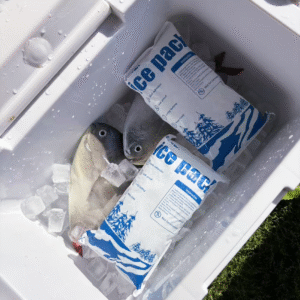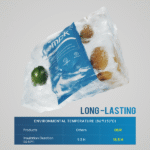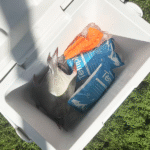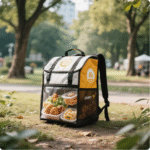Ensuring that vaccines stay potent from the factory to the patient hinges on maintaining a meticulous cold chain. Vaccine cold chain training equips you and your team to preserve vaccine potency, prevent costly waste and comply with regulatory requirements. The cold chain is a temperature controlled supply chain that spans manufacturing, transporte, storage and administration. Training isn’t optional—studies show that proper storage and handling reduce revaccination and financial losses. En esta guía, you’ll learn why training matters, how to create an effective program, what equipment you need, how to handle emergencies and what trends will shape 2025.

Why vaccine cold chain training is critical in 2025: understand the consequences of poor storage and the benefits of a robust program.
How to design an effective training program: cover core principles, SOPs and staff roles.
What equipment and technologies support training: explore digital data loggers, medical grade refrigerators and IoT tools.
How to prepare for emergencies and climate related challenges: build resilient procedures that protect vaccines during power outages or extreme weather.
What trends and innovations will influence training in 2025: from automation to AI, discover new opportunities to improve compliance and efficiency.
Why Does Vaccine Cold Chain Training Matter in 2025?
Training safeguards potency and public health. Vaccines lose efficacy when exposed to temperatures outside their recommended range; even a single freezing event can permanently destroy potency. A cold chain failure leads to revaccination, financial loss and decreased patient confidence. One industry estimate suggests that up to 35% of vaccines are compromised by temperature mishandling. Proper training minimises these risks by ensuring staff understand temperature requirements, equipment use and emergency responses.
Training reduces waste and protects your bottom line. Wasted vaccines translate into lost inventory and additional costs for replacement and revaccination. By teaching personnel how to monitor temperatures and respond quickly to excursions, training helps facilities avoid discarding expensive doses and fines associated with non compliance.
Training enhances regulatory compliance and patient safety. The CDC’s Vaccine Storage and Handling Toolkit emphasises three pillars of a robust cold chain—well trained staff, Equipo confiable y gestión precisa del inventario.. Without trained staff, even the best equipment fails to protect vaccines. Training ensures compliance with national and local regulations, such as the Vaccines for Children (VFC) program and Good Distribution Practice (PIB) pautas.
Training keeps pace with evolving vaccines and climate challenges. Modern vaccines range from routine refrigerated doses to mRNA products requiring ultra cold storage between –80 °C and –60 °C. Climate change introduces more frequent heatwaves and power outages, stressing cold chain systems. Training programs must adapt to these realities by equipping staff with the knowledge and skills to handle ultra cold units, alternative power sources and emergency procedures.
What Are the Essential Elements of an Effective Vaccine Cold Chain Training Program?
Clearly defined roles and responsibilities. Each facility should designate a primary vaccine coordinator and at least one backup coordinator. These individuals oversee vaccine management, monitor storage and handling, manage inventory and ensure annual training for all staff.
Comprehensive initial and annual training. Every provider location must receive comprehensive training during the initial enrollment visit and annually thereafter. Training covers programmatic requirements, storage and handling procedures, inventory management and emergency response. At a minimum, the vaccine coordinator and backup coordinator must complete this training each year.
Procedimientos operativos estándar (Sops). Facilities should develop and maintain written SOPs covering routine vaccine storage and handling, inventory management and emergency procedures. SOPs serve as training tools and ensure consistent practices across staff. They should include contact information for manufacturers, service providers and key facility personnel.
Training delivery methods. Combine online modules (p.ej., CDC’s You Call the Shots programa) with hands on demonstrations. Include interactive exercises such as temperature log interpretation, emergency simulations and equipment calibration. Document all training with dates and participants.
Building a Program That Works for You
Assess baseline knowledge: start with a survey to identify knowledge gaps. Ask staff about temperature ranges, equipment use and emergency procedures.
Set measurable objectives: define what participants should know or do after training—e.g., read and record data logger readings, pack vaccines for transport.
Use adult learning principles: incorporate short modules, real world scenarios and visual aids. Encourage questions and group discussions to reinforce retention.
Schedule refreshers: provide annual refresher courses and update training whenever new vaccines or regulations are introduced.
Evaluate and adapt: collect feedback and monitor performance metrics such as temperature excursion incidents. Adjust the curriculum based on findings.
| Componente | What It Covers | Por que importa | Para ti |
| Programmatic training | VFC requirements, provider agreements | Ensures compliance with public funded programs | Avoids penalties and maintains eligibility |
| Vaccine management training | Almacenamiento, manejo, transport procedures | Preserves potency and reduces waste | Protects inventory and patients |
| Emergency training | Cortes de energía, equipment failures, desastres naturales | Prepares staff to respond quickly | Minimises loss during crises |
| Equipment training | Using digital data loggers, refrigerators, congeladores | Provides accurate temperature monitoring and maintenance | Ensures data integrity |
Consejos y consejos prácticos
Schedule hands on sessions: show staff how to read data logger displays, download temperature data and interpret trends.
Role playing scenarios: simulate a temperature excursion or power outage; ask teams to follow SOPs and document actions.
Create pocket checklists: summarise temperature ranges, monitor steps and emergency contacts. Distribute them to all staff.
Use micro learning modules: send short quizzes or videos via email or mobile apps to reinforce key concepts.
Ejemplo del mundo real: A rural clinic struggled with repeated vaccine loss due to inconsistent training. After implementing monthly 30 minute refreshers and emergency drills, las excursiones de temperatura disminuyeron 60%, saving the clinic thousands of dollars and preventing revaccinations.
How to Choose and Use Equipment for Vaccine Cold Chain Training?
Invest in medical grade refrigeration and freezing units. Household refrigerators are not designed for vaccine storage; they lack uniform temperature control and can lead to inadvertent freezing or warm spots. CDC guidelines recommend purpose built medical or pharmaceutical grade units, followed by stand alone refrigerators and freezers. Ensure your units have enough capacity to store peak inventory without crowding.
Use digital data loggers (DDL) for accurate monitoring. Digital data loggers provide continuous temperature data and record how long a unit has been operating outside the recommended range. Unlike simple minimum/maximum thermometers, DDLs use buffered probes to measure vaccine temperatures more accurately. Choose DDLs with detachable buffered probes, alarms for out of range temperatures, programmable logging intervals and valid calibration certificates. Maintain at least one backup monitoring device and keep data for at least three years for trend analysis.
Set appropriate temperature ranges. Different vaccines require distinct temperature zones:
Refrigerated vaccines: store between +2 °C y +8 °C (36 °F a 46 °F), ideal at +5 °C.
Vacunas congeladas: maintain –50 °C to –15 °C.
Ultra cold chain vaccines (p.ej., mRNA boosters): keep –80 °C to –60 °C for long term storage; after thawing, hold at +2 °C a +8 °C for a limited time.
Implement routine monitoring and maintenance. Monitor vaccine storage equipment and temperatures daily. Keep power supply stable, use dedicated outlets and label circuits to prevent accidental unplugging. Maintain backup power sources or solar units to protect vaccines during outages. Calibrate monitoring devices every two to three years or as recommended.
Integrate IoT and smart monitoring technologies. Modern cold chain devices connect to cloud platforms for real time alerts and analytics. Solutions like Trackonomy’s IoT enabled temperature monitors provide constant visibility into location, temperatura y humedad. Real time tracking helps optimise routes, reduce spoilage and verify compliance. When selecting smart monitors, prioritise security, data accessibility and compatibility with existing systems.
Training Focus Points for Equipment
Show trainees how to properly place thermometers and probes inside storage units to avoid false readings.
Teach staff to download and review DDL data regularly, not just during audits.
Demonstrate calibration procedures and highlight the importance of valid certificates.
Emphasise the difference between air temperature and buffered vaccine temperature.
How to Implement Emergency Preparedness and Climate Resilient Training?
Develop comprehensive emergency SOPs. Fallas de equipos, power outages and natural disasters can quickly compromise vaccines. SOPs should outline steps for relocating vaccines, activating backup generators, contacting utility providers and documenting actions. Keep emergency contact lists accessible and update them regularly.
Train for climate change impacts. Climate change increases the frequency of extreme weather events, heatwaves and power disruptions. A qualitative study in Nigeria found that training programmes are needed to enhance technical knowledge about climate change and its effects on vaccine storage. Policies should aim to create an inclusive workforce by providing access to training for both new and experienced cold chain officers. Include modules on alternative power sources (p.ej., solar refrigerators), managing humidity and heat loads, and adapting to unpredictable conditions.
Prepare for ultra cold chain logistics. Ultra cold vaccines require specialised freezers, dry ice shipping containers and strict handling procedures. Train staff on how to receive, unpack, thaw and administer ultra cold vaccines within the permitted timeframe. Highlight the difference between long term ultra cold storage and short term refrigerated storage, and ensure staff know the consequences of temperature excursions.
Include exercises on climate resilient equipment. Introduce solar powered refrigerators, cold boxes and phase change materials for areas with unreliable electricity. Provide case studies that illustrate how innovative equipment maintains vaccine integrity during heatwaves or transport delays.
Practical Emergency Tips
Maintain an emergency kit with coolers, conditioned ice packs and insulated blankets. Rotate supplies regularly.
Test backup power sources quarterly; include drills to switch power seamlessly without jeopardising vaccine temperature.
Establish relationships with nearby facilities to temporarily store vaccines if your equipment fails.
Document all actions during an emergency and review them after the event to improve procedures.
What Are the Latest Innovations and Trends in Vaccine Cold Chain Training in 2025?
The cold chain industry is transforming rapidly. Understanding these trends will help you future proof your training program and adopt best practices.
Automatización y Robótica
Cold storage facilities are adopting automated storage and retrieval systems (COMO/RS) and robotic handling to improve efficiency and reduce labour costs. Robots operate continuously, minimise human error and provide consistent temperature control. Aproximadamente 80% of warehouses remain unautomated, highlighting growth potential. Training should familiarise staff with robotic systems, safety protocols and the interface for monitoring automated processes.
La sostenibilidad como valor fundamental
Environmental concerns and regulations push sustainability to the forefront of cold chain logistics. Refrigeración energéticamente eficiente, renewable energy sources and sustainable packaging are becoming standard practices. These initiatives reduce carbon footprint, minimise food waste and ensure compliance. Training should cover energy efficiency measures, proper disposal of cold chain packaging and the use of biodegradable materials.
Real Time Visibility and IoT
Advanced IoT enabled devices provide real time data on location, temperatura y humedad, offering end to end visibility across the cold chain. Real time monitoring reduces waste, optimises logistics and enhances compliance documentation. Ensure your training program includes how to read dashboards, respond to alerts and integrate IoT data into quality management systems.
Infrastructure Modernisation
Aging cold chain infrastructure requires investment in modern refrigeration, insulation and renewable energy systems. Upgrading equipment not only improves energy efficiency but also reduces exposure to volatile energy costs. Training should include awareness of new technologies, funding opportunities and maintenance of upgraded systems.
IA y análisis predictivo
Inteligencia artificial (AI) and predictive analytics are transforming cold chain decision making. La IA optimiza las rutas, predicts equipment maintenance and forecasts demand. AI driven demand forecasting addresses supply chain uncertainty and helps schedule vaccine orders more accurately. Introduce your team to basic AI concepts and train them to interpret predictive maintenance alerts and demand forecasts.
Growth in the Pharmaceutical and Food Cold Chain
The pharmaceutical sector drives significant cold chain expansion. Alrededor 20% of new drugs in development are gene and cell therapies requiring strict temperature control. The global pharmaceutical cold chain market is expected to grow steadily. Además, demand for fresh food logistics and last mile delivery is rising. Training should address cross sector similarities, focusing on maintaining temperature integrity during last mile distribution and customer communications.
Strategic Partnerships and Integration
Colaboración entre fabricantes, packaging suppliers and technology providers enhances product development and supply chain resilience. Por 2025, data standardisation will enable seamless integration across supply chains. Encourage staff to participate in cross organizational training and information sharing to stay updated on integrated systems.
Preguntas frecuentes
What is the vaccine cold chain? A vaccine cold chain is a temperature controlled supply chain encompassing the manufacture, transporte, storage and administration of vaccines. Maintaining this chain prevents potency loss and protects public health.
How often should cold chain training be performed? Como mínimo, staff should receive training during initial enrollment and annually thereafter. Additional training is necessary when new vaccines are introduced or guidelines change.
Which temperature monitoring device is recommended? The CDC recommends digital data loggers with buffered probes, alarms for out of range temperatures and programmable logging intervals. Ensure devices have valid calibration certificates.
What are common vaccine storage temperature ranges? Refrigerated vaccines require +2 °C a +8 °C; frozen vaccines need –50 °C to –15 °C; ultra cold chain vaccines require –80 °C to –60 °C for long term storage.
How can climate change affect vaccine cold chains? Climate change leads to extreme weather, power disruptions and unpredictable ambient temperatures, which threaten vaccine storage and distribution. Training programmes must address these challenges and equip staff with climate resilient strategies.
Resumen y recomendaciones
Control de llave: Vaccine cold chain training is essential for maintaining vaccine potency, reducing waste and ensuring compliance. Staff need initial and annual training, clear SOPs and hands on practice. Equipment such as digital data loggers, medical grade refrigerators and IoT monitors play a critical role. Emergency preparedness and climate resilient strategies are increasingly important. Innovations like automation, AI and real time tracking offer opportunities to enhance efficiency and reliability. Sustainability and strategic partnerships will shape the future of cold chain logistics.
Próximos pasos viables:
Audit your current training program: identify gaps in staff knowledge, SOP documentation and compliance.
Update your equipment: invest in medical grade refrigerators and digital data loggers with valid calibration certificates; integrate IoT monitoring for real time visibility.
Strengthen SOPs and emergency plans: ensure they cover routine and emergency procedures, including climate related scenarios. Place SOPs near storage units and review them regularly.
Schedule regular training: provide comprehensive initial training and annual refreshers; include climate resilience and new technologies.
Leverage technology and partnerships: explore automation, AI and sustainable practices; collaborate with supply chain partners to share best practices and integrate data.
Acerca de Tempk
Quienes somos: Tempk is a leader in cold chain solutions for the healthcare and life sciences industries. Con décadas de experiencia, we design and deliver temperature controlled packaging, monitoring devices and training services that help you safeguard vaccines and biologics. Our products include medical grade refrigerators, calibrated digital data loggers and cloud based monitoring platforms that provide real time insights and automated alerts. We partner with healthcare providers, pharmacies and public health programs to ensure vaccines remain potent from production to administration.
Nuestro compromiso: We continually invest in research and development to bring you the latest innovations, such as energy efficient refrigeration and AI driven predictive analytics. Our training services and support materials help your team stay compliant and confident. To learn how Tempk can support your vaccine cold chain program, contact our specialists for a personalised consultation and explore our range of solutions.























